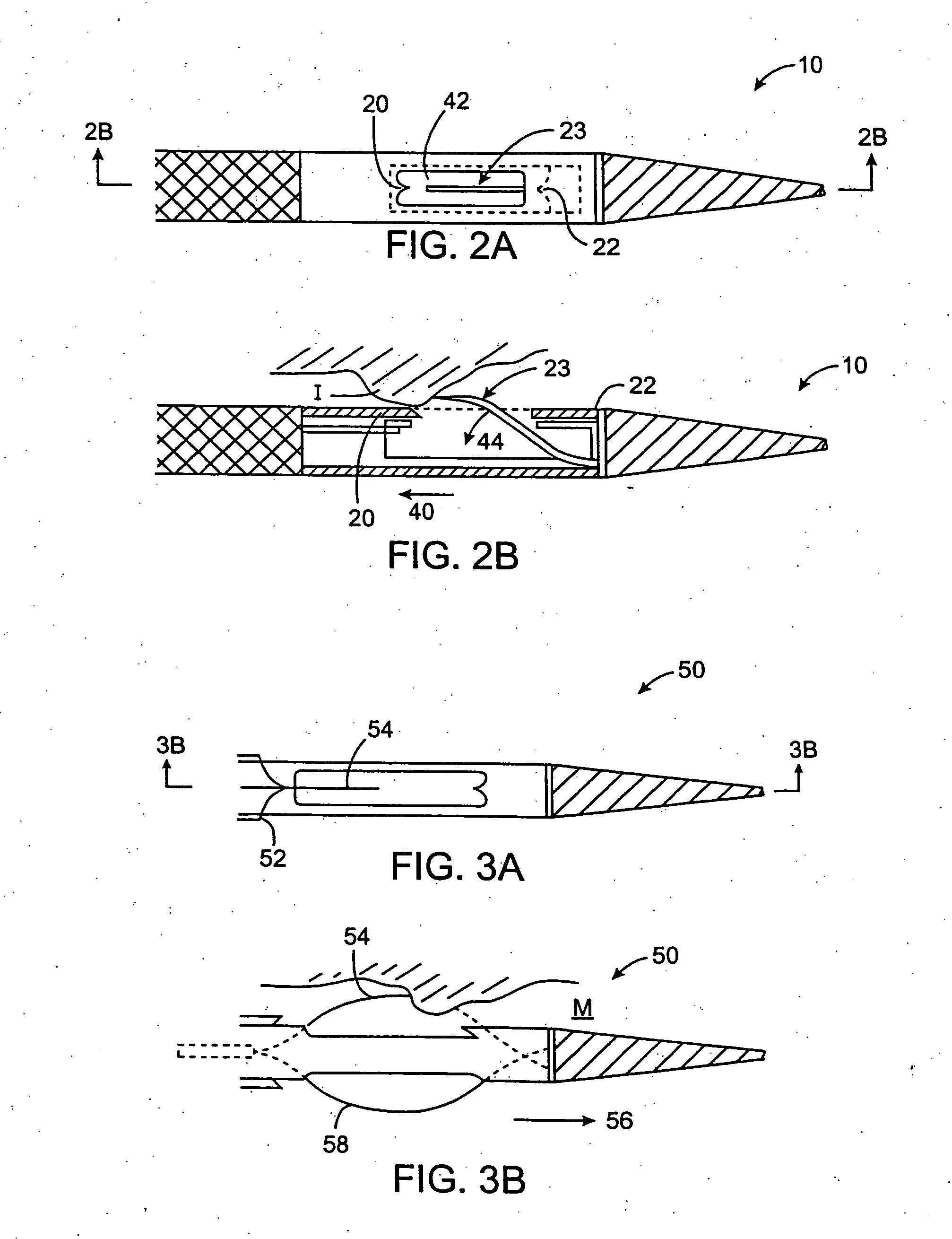Apparatus and methods for material capture and removal
a technology of atherectomy catheter and apparatus, which is applied in the field of apparatus and methods, can solve the problems of many side-cutting atherectomy catheters having difficulty in capturing occluding material, myocardial infarction, and catheter design suffer from certain limitations, so as to reduce the amount of cutting force
- Summary
- Abstract
- Description
- Claims
- Application Information
AI Technical Summary
Benefits of technology
Problems solved by technology
Method used
Image
Examples
Embodiment Construction
[0026] The present invention provides devices, methods, and kits for use in removing material from a body lumen. The present invention may be used in a variety of body lumens, including but not limited to coronary and other arteries. Advantageously, the present invention reduces the amount of force required to cut material and facilitates material capture into apertures of the catheter.
[0027] Apparatus according to the present invention will comprise catheters having catheter bodies adapted for intraluminal introduction to the target body lumen. The dimensions and other physical characteristics of the catheter bodies will vary significantly depending on the body lumen which is to be accessed. In the exemplary case of atherectomy catheters intended for intravascular introduction, the catheter bodies will typically be very flexible and suitable for introduction over a guidewire to a target site within the vasculature. In particular, catheters can be intended for “over-the-wire” intro...
PUM
 Login to View More
Login to View More Abstract
Description
Claims
Application Information
 Login to View More
Login to View More - R&D
- Intellectual Property
- Life Sciences
- Materials
- Tech Scout
- Unparalleled Data Quality
- Higher Quality Content
- 60% Fewer Hallucinations
Browse by: Latest US Patents, China's latest patents, Technical Efficacy Thesaurus, Application Domain, Technology Topic, Popular Technical Reports.
© 2025 PatSnap. All rights reserved.Legal|Privacy policy|Modern Slavery Act Transparency Statement|Sitemap|About US| Contact US: help@patsnap.com



